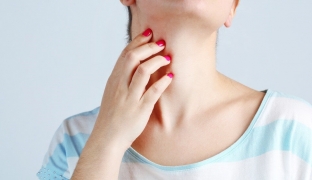Cholestasis is detected in many diseases of the liver and biliary tract, which lead to extrahepatic biliary obstruction and / or intrahepatic impaired bile excretion. In some patients, the most distressing and worrying symptom associated with cholestasis is pruritus. It can have varying degrees of intensity, ranging from mild, moderate (leading to sleep disturbance) and ending with severe, in which the usual rhythm of life of patients is completely disrupted. What is the mechanism of development of skin itching in cholestasis? What are the aspects of the treatment of cholestatic pruritus of the skin?
Existing theories for the development of skin itching in cholestasis
The pathogenesis of skin pruritus in cholestasis has not been studied in detail, but several major hypotheses currently exist, including accumulation of bile acids and increased excitation of opioid receptors.
There are three substances that play an active role in the development of skin itching in cholestasis:
- bile acids;
- endogenous opioids;
- lysophosphatidic acid and autotaxin.
One theory suggests an increase in the level of bile acids in the skin of patients with cholestatic disease, which leads to the appearance of pruritus. The observations of the followers of this theory demonstrate that a decrease in the amount of bile acids in the superficial layers of the skin in this group of patients correlates with a change in the intensity of itching, reports estet-portal.com. Other studies show the possibility that bile acid intake induces and exacerbates pruritus.
The relevance of these hypotheses is that elevated plasma bile acids due to hepatotoxicity affect pruritus more than their direct effect on nerve endings. Purified bile acids damage hepatocyte membranes, allowing cell contents (much of which can cause itching) to leak into the general circulation.
The results of three studies that indicate the relative role of bile acids in skin pruritus in cholestasis:
- Inadvertent reduction in pruritus despite ongoing cholestasis and high plasma bile acids;
- absence of pruritus in many patients with cholestasis and elevated plasma bile acids;
- obvious lack of correlation between the presence and severity of pruritus and the concentration of bile acids in the skin of patients with chronic cholestasis in most well-conducted studies on this issue

Endogenous opioids and lysophosphatidic acid in the development of skin itching in cholestasis
Increasing importance is attached to the role of endogenous opioids in the pathogenesis of skin pruritus in cholestasis. Administration of opioid mu-opioid receptor agonists may exacerbate pruritus in healthy subjects, presumably through a central action.
More importantly, endogenous opiate levels are increased (by an unclear mechanism) in patients with chronic liver disease. Numerous studies show a reduction in cholestatic pruritus in patients treated with opioid receptor antagonists.
Preliminary studies confirm the importance of the role of lysophosphatidic acid (LPA) in cholestatic pruritus. Compared with the control group, patients with cholestatic pruritus have significantly higher serum levels of LPA concentration and autotaxin activity.
Aspects of treatment of skin pruritus in cholestasis
The treatment of choice for skin itching in cholestasis may be to treat the underlying disease of the liver and biliary tract. In extrahepatic biliary obstruction in cases in which the main therapy is not possible, usually biliary drainage is very effective in stopping pruritus. Some medications may be used to relieve the symptoms of cholestatic itching of the skin.
In mild cases, the itching of the skin of cholestasis can be controlled with non-specific interventions such as warm baths, emollients, and sedatives.
However, many of these remedies often fail for moderate to severe itching accompanied by excoriations. In such cases, the following treatment options are used.
Drug treatment of skin itching in cholestasis:
- Bile acid derivatives. Cholestyramine and cholestipol are effective first-line agents in the treatment of moderate to severe cholestatic pruritus based on their favorable safety profile and clinical trial results.
- Rifampicin. Some research results show a reduction in cholestatic pruritus at a dose of 300 to 600 mg of rifampicin per day.
- Opioid receptor antagonists. The use of opioid antagonists such as injectable naloxone, oral nalmefene, oral naltrexone is often associated with partial relief of skin itching in cholestasis.
- Ursodeoxycholic acid. The effect of UDCA on pruritus, however, remains unclear. Two large clinical trials in primary biliary cirrhosis, for example, showed no reduction in pruritus at UDCA doses of 13 to 15 mg/kg/day. In comparison, high-dose therapy (30 mg/kg/day divided into 3 doses) has shown significant improvement in itch symptoms in other studies.
- Other means. Many other drugs can be used in the treatment of pruritus, but the number of studies conducted with their use is very limited and includes only a small number of patients. Methotrexate, phenobarbital, serotonin reuptake inhibitors, paroxetine, propofol are used. Plasmapheresis and phototherapy are also used in some cases.
Severe itching skin in cholestasis refractory to other therapies may be a relative indication for liver transplantation in patients with severe cholestasis.







Add a comment